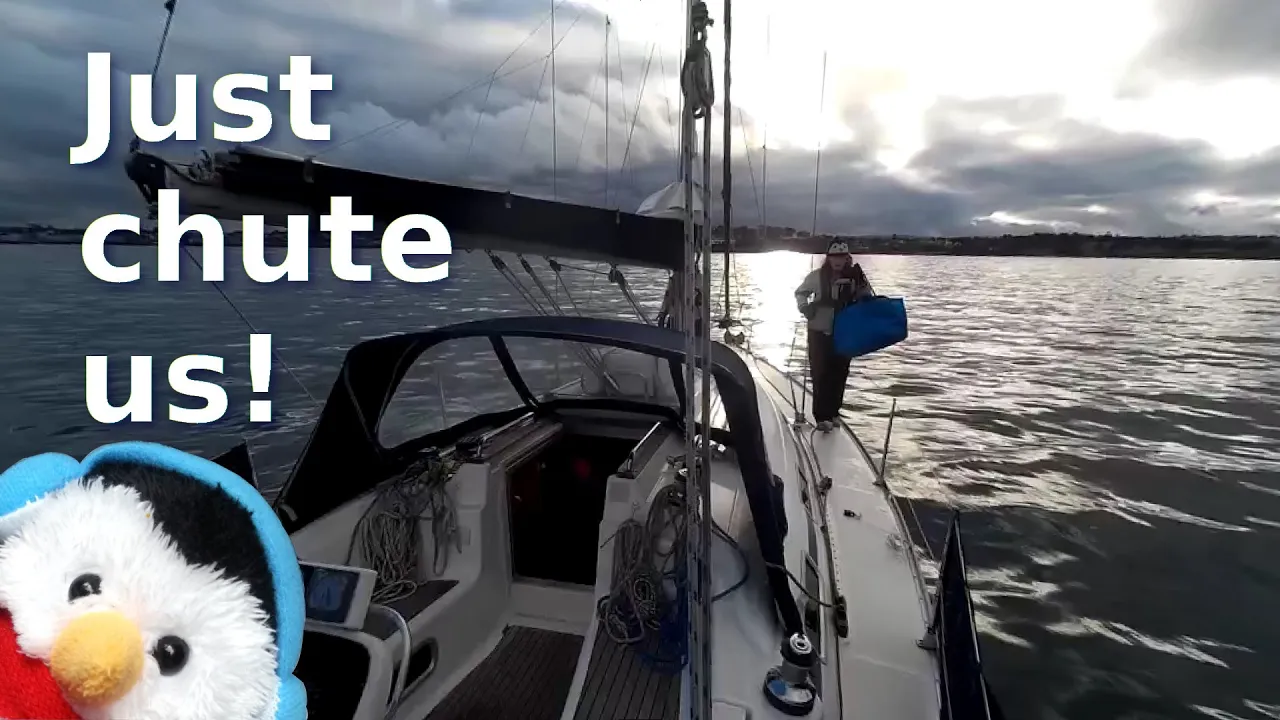We managed to have a nice day, so Beverley flew the drone. The drone really gives a sense of place, where we are, with views across the Irish sea yo Scotland just on the horizon. So with the weather far too cold for boat projects, we decided to answer a few of our viewer questions.
How do we lift the dinghy?
We have fitted cord to the hard points on the dinghy. One cord goes across the back of the dinghy, while the other goes across the front. On the front cord we also have a loop so that the main halyard, can go through the loop. We then have the cord set so that the front loop, goes under the back cord. This way we can just lift the loop and the dinghy, stays balanced. It can be a little bit tricky to set the cords, but we have managed it, so you can too. The only tricky bit is grabbing the loop with the halyard, but we have found that after we have placed the cord with a loop under the cord at the back and pull, we can then drop the loop, in such a way that you can get a boat hook into the loop. Once you have got the boat hook through the loop then it is just a simple job to get the halyard through the loop.
Night Sailing
How many night hours do you have?
When we last totalled our night hours, we had over 120 night hours, but since then we have done quite a few hours so that our normal response is far too many.
Why sail at night?
Night time sailing is not fun, as you are sailing when you are naturally tired, but you should consider it when:-
- The passage is a long one - For our boat, it takes 14 hours to cross to the Isle of Man, so unless you go at the summer equinox, there will be some night sailing, so we like to leave in the light, sail through the night and arrive the next day.
- Circumstance - The weather can change and if for some reason the boat slows down due to tide or wind, then you might end up coming in at night.
- Tides - It might just be that the tides are going in your direction partly through the night, so that you either leave in the night to arrive in the day, or you leave in the day, to arrive at night.
Making night time sailing as easy as possible
- Gain knowledge - Initially gain some knowledge about what the different lights are, for instance, what is the flash pattern for a East cardinal (3 flashes), an isolated danger mark(2 white flashes) etc.
- Look at your charts - Look at your charts so that you understand what lights to expect. So at Carrickfergus there are lateral buoys for the harbour and lateral buoys for the marina, so the buoys are:-
- Harbour
- Fl.R.7‧5s - Flashing Red every 7.5seconds apart
- Fl.G.7‧5s - Flashing Green every 7.5seconds apart
- While the marina buoys are
- Q.R. - Quick Red
- Q.G - Quick Green
- Oc. WRG 3s 5m3M - Occulting White Red and Green 3 second period 5m tall which you can see for 3miles. Incidentally the lights on this are red, white then green.
- Look after your crew - It is a lot colder at night, so make sure you have the right thermal gear. Have a spray hood to give yourself some protection. Have hot food and hot drinks onboard.
Instruments
- Know how to turn on the lights on your instruments - All boats and boat systems are different. We have three instruments from Raymarine and all of them have different ways to turn the lights on.
- Understand how to change the brightness - Most instruments can be dimmed, so know how to do that.
- Turn then back up - Remember that at the end of your passage, turn the brightness back up so that you can see the screens the next day
- Lights - Know what lights to turn on and under what circumstances you should have the various lights on
So that is the preparation, so next week, we will discuss the actual sailing at night.













